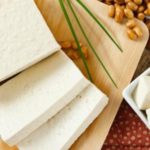To ensure quality and safe meals for your family, shopping for groceries is extremely important. Homemakers often pay attention to choosing the right time to shop for the freshest and cleanest food. “Don’t buy pork too early, and don’t buy tofu too late” is a piece of wisdom passed down through generations.
Why shouldn’t you buy pork too early or tofu too late?
In the past, when the economy was still difficult, pork was considered a luxury food. There were families that only bought pork a few times a month. Therefore, when meat sellers were not making sales, they would collect the leftover meat at the end of the day to sell the following day. The meat preservation technology back then was not advanced, so even in cold weather, the meat would still spoil overnight.
Therefore, if you go to the market too early, when it is still dark and you’re not paying close attention, you are very likely to buy leftover meat from the previous day, which the sellers “hide” or quickly swap and sell to customers.
Nowadays, most families have the means to buy meat for daily consumption, but the supply is also much higher, so the situation of unsold meat at the end of the day still happens. Many store owners still mix old meat with new meat to display for sale early in the morning. However, the wisdom of “not buying pork too early” is not as valuable as it used to be, because the old meat is preserved in refrigerators or frozen and will be sold later in the morning.
To avoid buying old meat, whether shopping in the morning or in the afternoon, consumers still need to know how to differentiate between fresh meat and old meat.

Explanations for the folk wisdom “Don’t buy pork too early, and don’t buy tofu too late” (Illustration: Istock)
What about “not buying tofu too late”? To prepare a batch of tofu to bring to the market, vendors have to wake up early and start production when it is still dark. With the equipment and manual production process as in the past, they cannot produce many batches of tofu every day and have to work continuously from morning until evening like they do nowadays.
Therefore, if you buy tofu in the morning, you will get a piece of tofu that is still warm and fresh. If you buy it in the late afternoon, you will receive pieces of tofu that have been left at room temperature the entire day, no longer fresh, and even sour or spoiled, especially in the summer when the weather is hot. Therefore, based on practical experience, people in the past gave advice not to buy tofu in the late afternoon.
The advice “Don’t buy pork too early, and don’t buy tofu too late” is based on the market shopping experience of housewives from ancient times, when the production system was less developed, markets had fewer people, and the circulation of goods was low. Nowadays, traditional markets have to compete with supermarkets in terms of both prices and food quality. The processes of pig slaughter, transportation, as well as tofu production, are now much faster, enough to supply the market continuously throughout the day.
Therefore, whether you go to the market in the early morning or in the late afternoon, you can still buy fresh meat and fresh tofu. Although old stock is still mixed among the fresh items, you can learn how to recognize them to avoid buying the wrong ones.
Tips for choosing good pork
To buy good quality pork, press your finger onto the meat and observe. If there are no dents or stickiness, then it is fresh meat. If you buy meat at the supermarket, choose pieces that are dry, without any water dripping from the tray or packaging. The meat should not be too tender when stored in the refrigerator.
You can also choose the best piece based on the color. If the outer layer of the meat is dry, has a bright red or dark red color, then it is fresh meat. Spoiled meat will have a brown, gray, dark red, or light green color.
The clearer the fat streaks on the surface of the meat, the better the quality. However, you should not choose meat with too much fat as it can become tough. For beef or chicken, the younger ones will have white fat streaks, while the older ones will have yellow fat streaks.
Tips for choosing good tofu
A good piece of tofu is usually milky white, while tofu with gypsum will have a clearer yellow color, and the yellower it is, the more gypsum it contains.
Take the tofu in your hand and feel it. If it feels light, very soft, then it is good tofu. If the tofu is heavy, firm, a bit hard, and the edges are sharp and square, it will not be good.
A good piece of tofu will have an attractive aroma, while tofu with gypsum will have a limey smell or no smell at all.
According to VTC



































